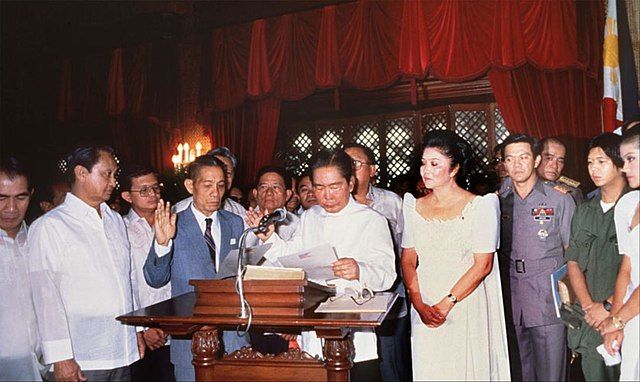Held at the Ateneo Art Gallery in Quezon City, Pio Abad's new exhibit entices the audience into seeing the realities of corruption through art
The first question I asked acclaimed artist Pio Abad was about cognitive dissonance. "I'm sure your exhibit stirs up in the minds of supporters of the Marcos family," I commented. "How do you invite them to open their minds to these works?"
With a smile, the artist calmly answered: "I think the show is . . . pretty." The small group around us chuckle—it's true. "[The show] is seductive. It's not explicitly angry. From the aesthetic point of view, it is beguiling and that's [what gets people interested]."
Read more: Halalan 2022: Why Your Vote and Your Voice Matters
Entitled "Fear of Freedom Makes Us See Ghosts", Pio Abad's latest exhibition is one that is as timely as ever. To be displayed at the Areté was a plan four years in the making, though the creator himself had no idea that it would come under such pivotal circumstances. Dressed head to toe in pink—from his face mask to his socks—Abad could easily be labelled as partisan. But his work and demeanour do not exude the kind of condescension familiar to political zealots. He is merely doing what artists do: exhibiting reality.

Abad’s parents were activists during the time of Martial Law in the '70s. They were incarcerated in a military camp before being released and placed under “campus arrest” at AdMU for one year. Through their advocacy came Abad's passion for archival history. "I'm a real nerd about that," he laughed. His current exhibit portrays many of his finds that come from excavating history. These items are an "inventory of the regime's corruption": from the Marcos family's commissioned paintings to Imelda's diamonds and artworks bought from Old Masters using taxpayers' money.
Ironically enough, seeing this in real life was Abad's first foray into museum culture. "When I was young, the Presidential Museum in Malacañan was located in the basement of the Palace," he recalled. "Everyone was invited to come and see what the family had left behind and so that was my first experience of a museum—a museum [filled with] loot."




